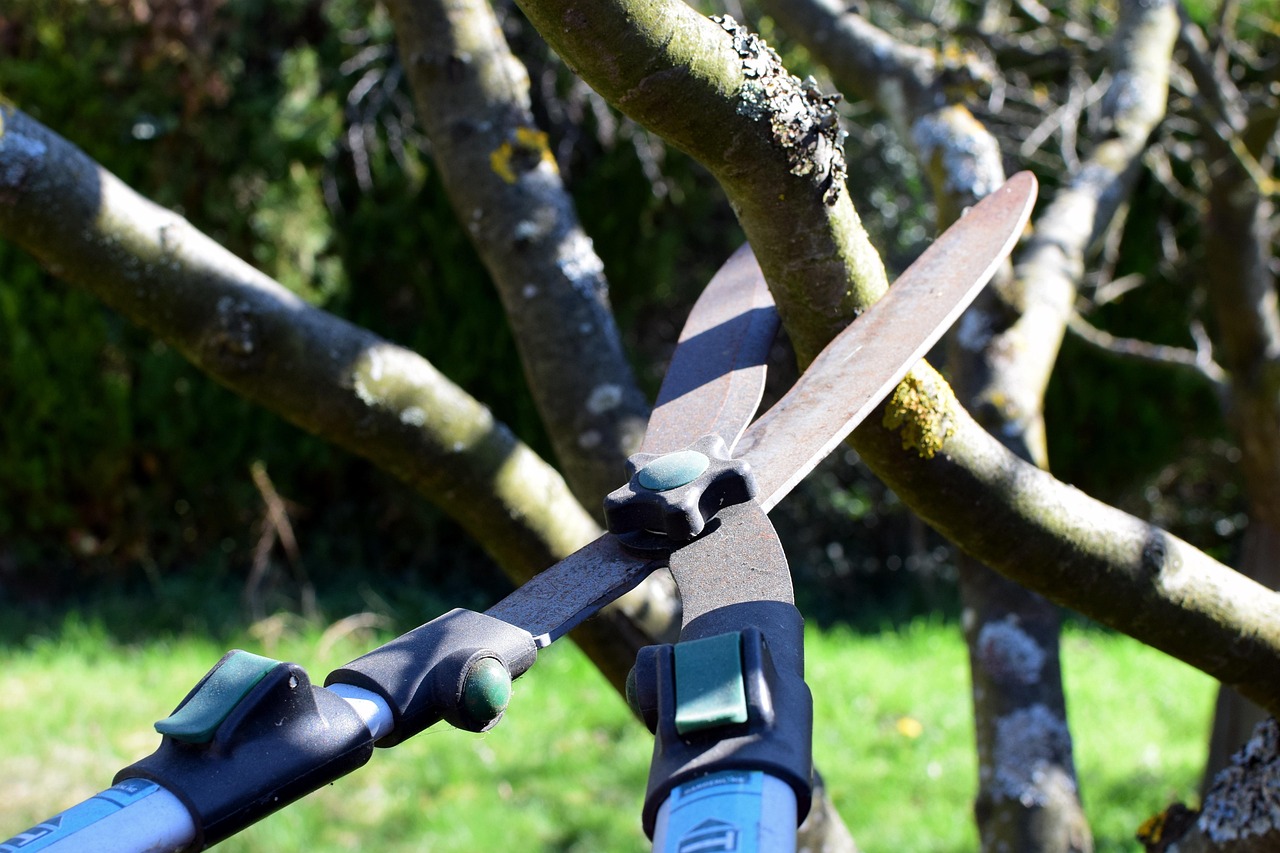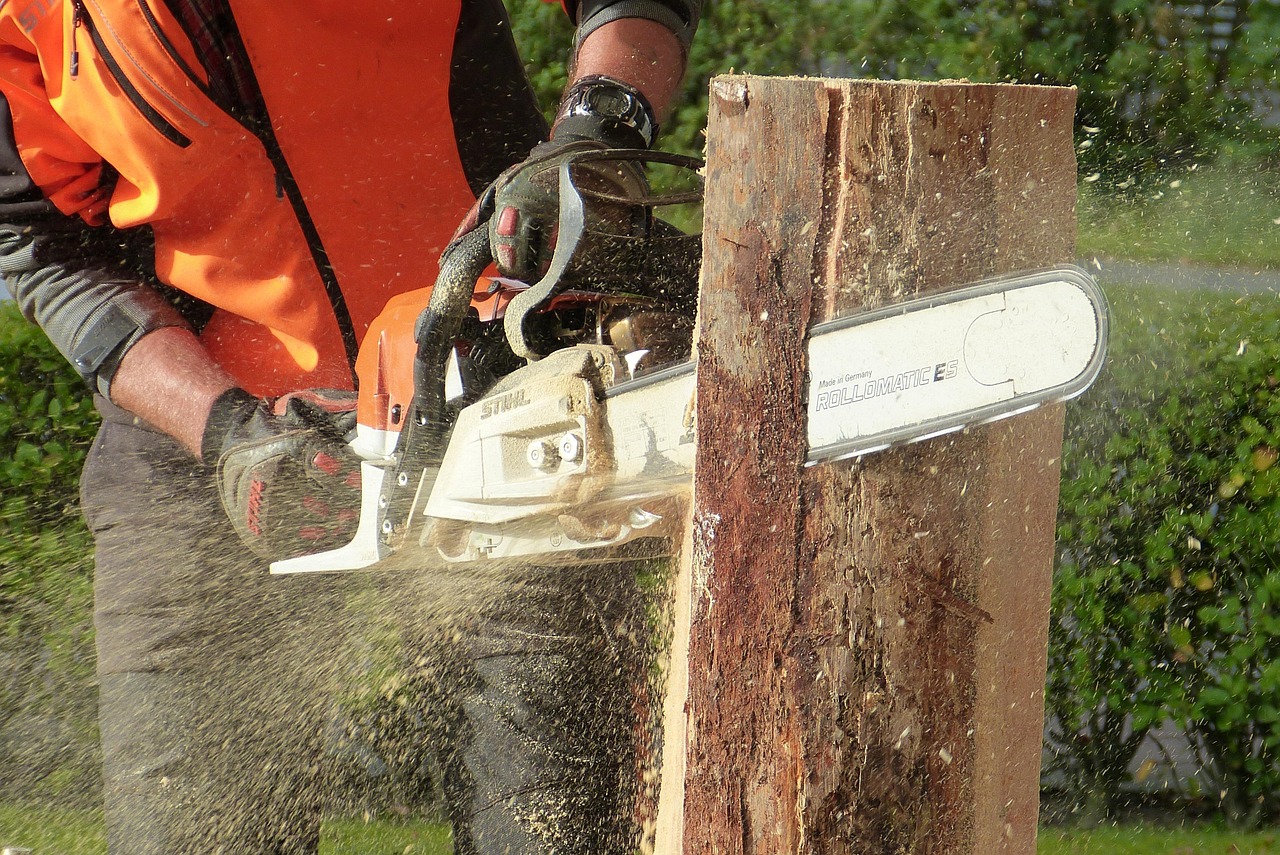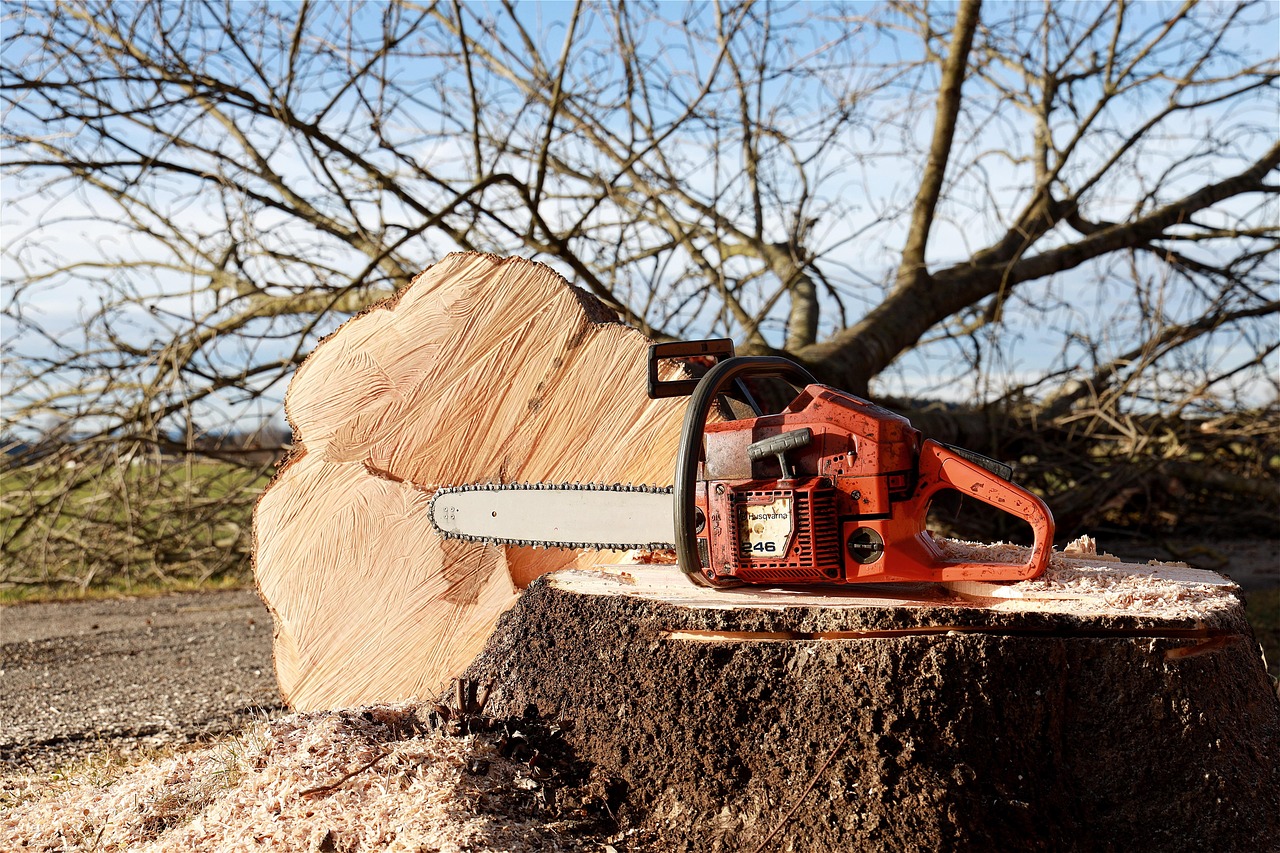Pruning deadwood regularly enhances tree safety by removing weak, damaged, or diseased branches. This practice reduces the risk of falling limbs, promotes healthy growth, and allows for better air circulation, ultimately contributing to the tree’s overall health and stability.
Trees are vital components of our environment. They provide shade, improve air quality, and enhance property values. However, like all living organisms, trees require proper care to thrive. One essential aspect of tree maintenance is pruning, specifically the removal of deadwood. This practice is often overlooked but plays a crucial role in ensuring the safety and health of trees.

Deadwood refers to branches that are no longer living. These branches can be caused by various factors, including disease, insect infestations, or environmental stressors. As trees age, their ability to sustain all branches diminishes. Consequently, dead branches can pose significant dangers. Regular pruning of deadwood not only mitigates these risks but also encourages healthier growth.
Understanding Deadwood and Its Impact
Recognizing deadwood is the first step in maintaining tree safety. Deadwood can be identified by its dry appearance, lack of leaves, and brittle texture. These branches often break off during storms or high winds, creating hazards for people and property below. Understanding the importance of addressing deadwood is essential for any tree owner or caretaker.
The impact of deadwood on a tree can be detrimental. It can lead to several complications, including:

- Increased Risk of Breakage: Deadwood is weak and brittle. High winds or storms can easily cause these branches to snap off.
- Attracting Pests: Dead branches can attract pests and diseases that may spread to healthy parts of the tree.
- Reduced Aesthetic Value: Trees with deadwood can appear unkempt and unhealthy, detracting from the beauty of landscapes.
By addressing these issues through regular pruning, tree owners can maintain a safer and more attractive environment.
Moreover, understanding the benefits of pruning deadwood extends beyond immediate safety concerns. Healthy trees contribute positively to their surroundings. They provide shade, improve air quality, and support local ecosystems. Thus, maintaining tree health through regular pruning is a responsible choice for homeowners and communities alike.
The Benefits of Regular Pruning
Regular pruning of deadwood offers numerous benefits that contribute to both safety and tree health. Here are some key advantages:

| Benefit | Description |
|---|---|
| Enhanced Safety | Removing deadwood significantly reduces the risk of falling branches during storms or strong winds. |
| Improved Tree Health | Pruning allows more sunlight and air to reach the remaining branches, promoting healthier growth. |
| Pest Control | Deadwood can harbor pests and diseases; removing it helps protect the tree from infestations. |
| Aesthetic Appeal | A well-pruned tree looks better in landscapes and increases property values. |
In addition to these benefits, regular pruning fosters a strong structure within the tree. By removing weak branches, you encourage the development of a more robust framework. This can enhance the overall stability of the tree, making it less susceptible to damage during adverse weather conditions.
Furthermore, pruning can stimulate new growth. When deadwood is removed, the tree can redirect its energy towards healthy branches. This leads to lush foliage and a vibrant appearance. Homeowners who invest time in tree care will notice not just safety improvements but also a more lively landscape.
Pruning deadwood also serves as an opportunity for inspection. During this process, tree care professionals can assess the overall health of the tree. They can identify any signs of disease or pest infestations early on, which is crucial for timely intervention.

In summary, regular pruning of deadwood is an essential practice for ensuring tree safety and health. It removes potential hazards while encouraging growth and improving aesthetics. The benefits extend beyond individual trees to enhance the overall environment in which they thrive.
Best Practices for Pruning Deadwood
While pruning deadwood is beneficial, it is crucial to follow best practices to ensure that the process is effective and safe for the tree. Proper techniques can maximize the benefits while minimizing potential harm. Here are some essential guidelines to follow:
- Timing: The best time to prune trees is during their dormant season, typically late fall to early spring. Pruning during this period minimizes stress and reduces the risk of disease transmission.
- Tools: Use clean, sharp tools such as pruning shears, loppers, and saws. Clean tools prevent the spread of pathogens and make cleaner cuts, which helps the tree heal faster.
- Cutting Technique: Make cuts at a slight angle just above a node or branch collar. This technique promotes quicker healing and minimizes damage to the tree.
- Avoid Topping: Topping is the practice of cutting back large branches indiscriminately. It can lead to weak growth and make trees more susceptible to disease.
Following these practices can ensure that pruning is beneficial rather than harmful. It allows the tree to heal efficiently and continue to thrive.
Tools for Pruning Deadwood
Having the right tools is essential for effective pruning. The following tools are commonly used for removing deadwood:
| Tool | Description | Use Case |
|---|---|---|
| Pruning Shears | Handheld scissors used for cutting small branches. | Ideal for removing deadwood on younger or smaller trees. |
| Loppers | Long-handled pruners that provide leverage for cutting thicker branches. | Best for branches that are too thick for pruning shears but still manageable. |
| Saw | A hand or power saw used for larger branches. | Necessary for cutting substantial deadwood that cannot be handled by shears or loppers. |
| Rope Saw | A saw attached to a rope, allowing you to reach higher branches. | Useful for pruning deadwood in tall trees where ladders cannot be safely used. |
Selecting the appropriate tool based on the size and location of the deadwood is essential for effective pruning. Proper tool usage ensures cleaner cuts, which aids in quicker healing for the tree.
Signs That Your Tree Needs Pruning
Recognizing when a tree requires pruning is crucial for its health and safety. Here are some signs that indicate it may be time to remove deadwood:
- Brittle Branches: If branches snap easily or are dry and crumbly, they are likely dead and should be removed.
- Lack of Foliage: Branches that do not produce leaves during the growing season are often dead.
- Cavities or Cracks: Visible damage in the bark or structure of the tree indicates weakness and potential deadwood.
- Pest Infestation: If pests are present on certain branches, these areas may be compromised and need pruning.
Monitoring trees regularly helps identify these signs early, allowing for prompt action to maintain tree health and safety.
The Role of Professionals in Pruning
While homeowners can prune trees, hiring a professional arborist has significant advantages. Arborists bring expertise and experience that ensure proper techniques are employed. Here are some reasons to consider professional help:
- Expert Knowledge: Arborists understand tree biology and can assess the specific needs of each tree species.
- Safety: Professionals are trained to work safely at heights and with potentially hazardous branches.
- Equipment: Arborists have access to specialized tools and equipment that may not be available to homeowners.
- Sustained Health: They can provide ongoing care plans that include not just pruning but also fertilization and disease prevention.
Engaging an arborist for deadwood removal ensures that trees are cared for properly, significantly reducing risks associated with improper pruning methods.
Environmental Benefits of Pruning Deadwood
The practice of pruning deadwood not only benefits individual trees but also has broader environmental implications. Healthy trees play a vital role in our ecosystem by:
- Carbon Sequestration: Trees absorb carbon dioxide, helping to mitigate climate change.
- Biodiversity Support: Healthy trees provide habitat for various species, contributing to biodiversity.
- Soil Health Improvement: Trees enhance soil quality through leaf litter, promoting healthy microbial activity.
Maintaining tree health through regular pruning supports these environmental functions, creating a more sustainable ecosystem overall.
Common Myths About Pruning Deadwood
There are several misconceptions surrounding the practice of pruning deadwood. Understanding these myths can help tree owners make informed decisions about tree care. Here are some of the most common myths:
- Myth 1: Pruning is harmful to trees. Fact: When done correctly, pruning improves tree health and safety. It removes weak branches and promotes new growth.
- Myth 2: Trees should never be pruned in the fall. Fact: While late fall is not ideal for all species, it can be appropriate for some trees, especially those that go dormant early.
- Myth 3: All dead branches should be removed immediately. Fact: Some deadwood may not pose an immediate threat and can be left until the next pruning season.
- Myth 4: Topping is a safe way to prune trees. Fact: Topping is detrimental to tree health and can lead to new growth that is weak and prone to breaking.
Dispelling these myths is crucial for promoting effective tree care practices among homeowners and property managers.
Seasonal Considerations for Pruning
Understanding the seasons and how they affect tree health is vital for effective pruning. Different trees react differently to pruning at various times of the year. Here’s a breakdown of seasonal considerations:
Spring Pruning
Spring is often a busy time for tree growth. Pruning during this season can stimulate growth, but caution is necessary:
- Timing: Late winter or early spring is best before new growth begins.
- Benefits: Helps manage shape and size as the tree starts to leaf out.
Summer Pruning
Summer pruning can be useful for specific goals, such as controlling growth:
- Timing: Prune during the growing season when the tree can easily heal.
- Benefits: Removes excess growth and allows light to penetrate the canopy.
Fall Pruning
Pruning in the fall comes with its own set of considerations:
- Timing: Late fall can be effective, but it’s essential to avoid pruning just before winter.
- Benefits: Helps prepare trees for winter by removing weak branches that could break under snowfall.
Winter Pruning
Winter is often considered the ideal time for most trees:
- Timing: Late winter before spring growth starts is preferred.
- Benefits: Trees are dormant, reducing stress and allowing for better healing.
Understanding these seasonal factors enables tree owners to plan their pruning effectively, ensuring the best results for tree health and safety.
Pest Management in Relation to Pruning
Pests can significantly impact the health of trees. Regular pruning of deadwood not only removes potential hazards but also plays a role in pest management. Here are important points to consider:
- Pest Attraction: Deadwood often attracts pests like beetles, borers, and fungi. Removing these branches reduces their habitat.
- Disease Prevention: Many pests carry diseases that can harm the entire tree. Pruning helps protect healthy wood from infection.
- Monitoring: During pruning, arborists can identify signs of pest infestations early, allowing for timely intervention.
A proactive approach to pest management through regular pruning enhances the long-term health of trees and minimizes risks associated with infestations.
Caring for Pruned Trees
After pruning, proper care is essential to ensure trees recover well and thrive. Some key practices include:
- Avoid Over-Pruning: Removing too much foliage at once can stress the tree. It’s better to prune gradually.
- Watering: Ensure trees receive adequate water, especially during dry spells, to support recovery.
- Nutrient Support: Consider fertilizing the tree after pruning to provide it with necessary nutrients for new growth.
- Pest Monitoring: Keep an eye out for any signs of pests or diseases after pruning, as trees may be more susceptible during recovery.
Caring for pruned trees properly will promote their health and stability, ensuring they continue to provide benefits for years to come.
The Economic Impact of Tree Maintenance
The economic benefits of maintaining healthy trees through regular pruning extend beyond aesthetics. Here are some economic advantages associated with well-maintained trees:
- Aesthetic Value: Healthy trees increase property values by enhancing curb appeal.
- Energy Savings: Trees provide shade, reducing cooling costs in homes during hot summer months.
- Pest Control Costs: Regular maintenance reduces the likelihood of costly pest infestations that require professional intervention.
- Insurance Benefits: Properly maintained trees may lead to lower homeowner insurance premiums due to reduced risk of damage.
The investment in regular pruning pays off in multiple ways, making it a wise choice for homeowners and property managers alike.
Long-Term Benefits of Tree Pruning
Regular pruning of deadwood not only addresses immediate safety concerns but also contributes to the long-term health and resilience of trees. Over time, properly pruned trees adapt better to environmental changes and threats. Here are some long-term benefits associated with regular pruning:
- Increased Lifespan: Trees that receive consistent care, including deadwood removal, tend to live longer. They are less susceptible to diseases and structural failures.
- Improved Structural Integrity: Regular pruning helps develop a strong branching structure, reducing the likelihood of damage during storms or high winds.
- Enhanced Growth Patterns: Trees that are pruned regularly can develop more balanced and aesthetically pleasing growth patterns, contributing positively to the landscape.
- Better Adaptability: Healthy trees can better adapt to changing climate conditions, pests, and diseases, ensuring their survival and functionality in the ecosystem.
Investing time and resources into the regular pruning of deadwood ultimately pays off by creating a robust tree population that enhances the surrounding environment.
Community Benefits of Tree Maintenance
The benefits of maintaining trees extend beyond individual property owners to the community at large. Healthy trees contribute to the overall well-being of neighborhoods and cities. Some community benefits include:
- Improved Air Quality: Trees act as natural air filters, absorbing pollutants and releasing oxygen, which contributes to healthier living conditions.
- Urban Heat Reduction: By providing shade, trees help lower urban temperatures, reducing the heat island effect common in cities.
- Increased Property Values: Communities with well-maintained trees often see increased property values. Aesthetic landscapes attract homebuyers and businesses.
- Enhanced Recreational Spaces: Parks and green spaces with healthy trees offer residents places for recreation and relaxation, promoting physical and mental well-being.
By prioritizing tree care, communities can foster environments that support health, safety, and economic prosperity.
The Role of Education in Tree Care
Education plays a crucial role in promoting effective tree care practices within communities. Providing information about the importance of pruning deadwood can empower residents to take charge of their trees’ health. Educational initiatives can include:
- Workshops: Organizing community workshops led by arborists can provide hands-on training on proper pruning techniques.
- Informational Materials: Distributing pamphlets or creating online resources can inform homeowners about the benefits of tree care and when to seek professional assistance.
- Community Programs: Establishing local programs that encourage tree planting and maintenance can foster a sense of community responsibility toward environmental stewardship.
Through education, communities can cultivate a culture that values tree health, ensuring sustainable practices that benefit everyone.
Final Thoughts
Pruning deadwood regularly is an essential aspect of tree maintenance that significantly contributes to tree safety and health. This practice not only reduces hazards associated with weak branches but also promotes better growth and resilience within trees. Homeowners who engage in regular pruning see numerous benefits, including enhanced property value, reduced risk of pest infestations, and lower insurance costs.
The economic impact of tree maintenance extends beyond individual properties; it enriches entire communities by improving air quality, enhancing recreation spaces, and increasing property values. Additionally, understanding the seasonal considerations for pruning and dispelling common myths helps promote effective practices within communities.
Ultimately, the collective efforts of individuals, communities, and professionals in maintaining trees lead to healthier urban environments. By investing in regular pruning and tree education, we can ensure that our landscapes thrive for generations to come.
